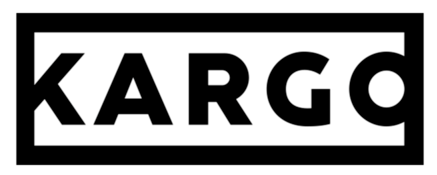The AI Role With No Coding — But Massive Impact
Dropbox, People Inc., and Every Inc. are paying $100K–$190K for AI Ops Leads who cut hours of work to minutes—without adding engineering headcount.
I’ve now heard of a dozen companies — from scrappy startups to giants like Dropbox — hiring a new kind of role: AI Operations Lead.
Think of them as a “glue person” between AI strategy and engineering, replacing slow, repetitive work with smart AI workflows.
Titles vary — “Head of AI Ops,” “VP of AI Editorial Ops,” “AI Ops Analyst,” “AI Automation Engineer”.
But the mission is the same: bake AI into daily work so teams get more done in less time.
10-Second Takeaways
AI Ops leads now command $100K–$190K salaries, with roles at Every, People, Dropbox, Kargo, and Quora.
Most roles need no coding — they center on workflow design, no-code tools, and team adoption. Quora is the rare exception, hiring a full-stack engineer.
Early results show AI Ops can cut multi-hour tasks to minutes, proving value fast and making adoption easier across teams.
Every Inc.: AI Operations Lead: Automating the Editorial Grind
The innovative biz Every Inc. shows how AI Ops works for a small, nimble team.
When Dan Shipper, CEO of Every, saw his team losing hours to repetitive work, he made what he now calls a “highly recommend” hire — Katie Parrott as Head of AI Operations.
“I sit with her once a week,” Shipper told Lenny’s Podcast.
“Every time I’m doing something repetitively, we put it in a to-do list. And she’s just constantly building prompts…automating as much as possible.”
-Dan Shipper, CEO of Every Inc.
A summary of Katie’s role:
Responsibilities:
Automate editorial workflows using Opus AI, custom prompts, and Every’s style guide.
Build Cloud Code commands and GitHub pull requests so engineers can apply copy edits without manual reviews.
Use Zapier and other no-code tools to integrate AI outputs into existing marketing and product pipelines.
Qualifications:
Process design skills honed at content marketing agency (Animals).
Strong writing/editing background to ensure AI-generated text meets brand standards.
Hands-on fluency with AI tools (Opus), no-code automation (Zapier), and developer workflows (Cloud Code, GitHub).
Her biggest early win: turning hours of manual editorial edits into a minutes-long Opus AI workflow.
The harder part, Shipper says, is
“You have to make sure it gets used”
— which Katie solves by embedding AI tools into the exact systems teams already live in.
Every shows how AI Ops can transform a small team’s output without a single line of code — as long as you have someone owning automation. Larger companies are doing the same at scale.
People Inc: VP of AI Editorial Operations
The newly rebranded People Inc. (formerly Dotdash Meredith) proves the same approach works across 40+ brands.
At People, Christine DiGangi is the VP of AI Editorial Operations.
She helps brands — like People, Better Homes & Gardens, Travel + Leisure, Food & Wine, and Investopedia — use AI to work faster without lowering quality.
“Generative AI is not magic dust… it requires experimenting to apply thoughtfully and effectively.”
— Christine DiGangi
Christine has more than 10 years in journalism, from writing and copy editing to leading teams.
Her goal is still the same: give people helpful, trustworthy information. The change is in how her team does it.
For her, AI doesn’t replace writers — it takes away the slow, boring tasks. Editors can then focus on checking facts, deciding what matters most, and creating great stories, videos, or social posts.
Her process is simple but focused:
Find tasks that don’t need human judgment.
Build AI workflows to do them.
Measure results to prove the value.
While Every focuses on one brand, People Inc. is proving that AI Ops can work across dozens of editorial teams, each with its own style and audience.
Outside of editorial, the same role is taking shape in sales and marketing teams.
Dropbox: AI Operations Analyst (GTM Focus)
Dropbox shows AI Ops is just as valuable outside editorial.
Dropbox wants to invest $125K to $190K in what it calls an “AI Operations Analyst” (remote).
It’ll be the link between its sales, marketing, customer success, and support teams — and the company’s AI and engineering groups.
The job’s mission:
“identify, define, and drive the integration of AI tools and agentic workflows that make our GTM teams faster, smarter, and more efficient.”
What this person will do:
Find AI wins — Spot tasks in tools like Salesforce, CPQ, and customer engagement platforms that AI can speed up for sellers and support teams.
Design agent flows — Create “agentic workflows” that guide AI agents through a task step-by-step, like upgrading Dropbox’s support chatbot to answer more questions automatically.
Make it stick — Work with GTM teams to test the tools, gather feedback, and make changes so people actually use the AI solutions.
What this person needs to know:
Sales/Rev Ops background — Has solved workflow problems with tech before.
Systems thinker — Understands end-to-end GTM processes and can explain needs clearly to engineers.
AI & scale — Passion for AI and bonus points for rolling out AI solutions across sales, support, and marketing.
This role is less about coding and more about knowing GTM inside-out and turning that knowledge into AI tools that teams love — and use.
Dropbox’s version of AI Ops lives in the go-to-market (GTM) org, proving that the role isn’t limited to content and publishing.
It’s about removing friction anywhere work gets bogged down.
Kargo
Kargo shows AI Ops can bridge creative and data teams.
They are hiring an AI Ops Lead ($140K to $180K per yr) to build automations that cut extra steps and speed up how ads are set up, tracked, and reported.
The company works with big brands and publishers to run ads on mobile, CTV, AI, social, and eCommerce.
The job is on Kargo’s Data & AI team.
For publishing campaigns, this means campaigns can launch faster, reports are ready sooner, and data moves between systems without manual work.
Main work:
Build automations — Use LangChain, Langflow, and n8n to connect tools like Salesforce, Slack, Snowflake, Jira, Confluence, Google Workspace, Looker, and Airtable.
Create AI agents — Use ChatGPT Enterprise to make bots that summarize reports, tag ad creative, and send tasks or approvals to the right people.
Train teams — Teach publisher-facing teams to use these tools so they can pull data, approve creative, and get campaigns live quickly.
Skills needed:
Automation + AI — 5–8+ years using n8n, LangChain, Zapier, Make, and LLM APIs.
Link systems — Know how to connect Salesforce, Slack, and other SaaS tools used by publishers.
Fix workflows — Find slow steps, build faster ones, and track results.
This role blends tech skills and process know-how to help publishers get more brand deals live, with less hassle.
Kargo’s approach blends AI automation with data systems integration — a reminder that AI Ops can bridge the gap between creative, data, and revenue teams.
Who the AI Operations Lead Works With
This new AI Operations Lead role doesn’t work alone.
They’re a glue person betwen
Here’s a simple three-role framework from Rachel Woods, CEO of DiviUp Agency (source: Becoming an AI-First Company: From Chaos to Clarity by Michael Stelzner).
Each role has a different job, but together they make AI work.
The AI Visionary — Sets the big AI strategy, picks the most valuable projects, and makes sure they match business goals.
The AI Operator — Turns strategy into action. They run AI projects, connect business needs to the right tools, and make sure people actually use them.
The Implementor — The most technical role. Often an engineer or developer, they build, test, and improve AI systems. They fix bugs, upgrade tools, and add new features.
People Inc.’s AI Operations Team
People Inc. is the best example I’ve seen of Rachel Wood’s 3 roles:
The AI Visionary is Christine DiGangi, VP of AI Editorial Operations. She works across 40+ brands to find places where AI can remove slow, repetitive work in editorial. She likely works closely on this with CEO Neil Vogel, who I see as one of the clearest thinkers about AI in publishing.
The AI Operator is a new role People Inc. is filling called "AI Editorial Operations Manager” ($100K to $120K/yr). It’s a client-facing role that will build custom AI workflows, train editorial teams, and track results like speed and quality. That role reports to Christine.
The Implementor, at People, would likely be a single engineer or combination of engineers. This could mean integrating LLM APIs into the CMS, setting up automated copy-editing prompts, or creating Slack bots that pull data when editors need it.
Quora’s AI Operations Team
Quora shows what AI Ops looks like when engineering takes the lead.
Their CEO Adam D’Angelo just announced they’re hiring a high-level AI Automation Engineer (think The Implementor) (job listed at $155K–$234K salary.)
“We are opening up a new role at Quora: a single engineer who will use AI to automate manual work across the company and increase employee productivity.”
— Quora CEO Adam D’Angelo
And Adam D. is playing the AI Visionary role:
“I will work closely with this person.”
That’s no surprise — Adam is on the board of OpenAI.
Instead of having an AI Ops Lead in the middle, they’re expecting their teams to play the operator role.
The goal is to automate as much as possible so employees can work faster…You’ll work closely with teams across the organization to identify high-impact problems and solve them, continually assessing new potential as frontier model capabilities constantly improve.
Main work:
Build AI tools — Create software that replaces manual work, using LLM-based tools, prompt engineering, and automated checks.
Prototype fast — Work with teams to find problems, build small AI tools, and get them running quickly.
Make sure tools are used — Roll out systems that teams trust, even with sensitive or important data.
Skills needed:
Full-stack coding — 5+ years in Python, React, and JavaScript, plus strong debugging skills.
AI know-how — Experience building with LLMs, designing prompts, and setting up auto-testing loops.
High ownership — Can handle sensitive data, shift priorities fast, and work well with non-technical teams.
The variety of titles — from “Head of AI Operations” to “AI Automation Engineer” — hides a shared truth: AI Ops is quickly becoming the connective tissue between leadership’s AI vision and the day-to-day systems that run the business.
The companies moving fastest are making this role a priority now, while the rest are still experimenting.
Does an AI Operations Lead need to be technical?
Most don’t — but they do need to make AI stick.
Most early AI Ops job listings say you don’t need to know how to code.
At Every, People, Dropbox, and Kargo, the AI Ops Lead role is about understanding the work more than writing code. These jobs focus on:
Mapping how work is done today and finding slow spots.
Using ready-made AI tools and no-code platforms like Zapier, Opus, n8n, and Airtable.
Plugging AI into the tools teams already use, so people adopt it quickly.
The coding is still important — but it’s usually done by an engineer or “Implementor” somewhere else in the company.
The AI Ops Lead’s main skill is knowing business processes well enough to design and roll out AI tools that get used.
Quora is the one big exception. They’re hiring an “AI Automation Engineer” — a full-stack developer who will also handle AI Ops work.
The takeaway: Unless your company is building AI tools from scratch like Quora, most AI Ops roles right now are more about workflow design and adoption than deep coding skills.
Final Takeaways
For Content/Media Executives:
First-wave AI Ops hires at Every, People, Dropbox, and Kargo earn $100K–$190K (Quora’s coding-heavy version reaches $234K).
Biggest wins come from using no-code AI in existing systems like CMS, Salesforce, Slack, and Airtable — not from building separate tools.
Early adopters are reporting hours-long workflows cut to minutes, freeing teams for higher-value work.
For AI Executives:
AI Ops leads are embedded champions — they design workflows, train staff, and drive adoption of AI tools inside client orgs.
Most companies want workflow-first, no-code integrations into their SaaS stack; only a few, like Quora, want deep engineering builds.
Partnering with AI Ops leads can lead to multi-brand rollouts (People Inc. = 40+ brands) and faster expansion without long sales cycles.
Thanks for reading!
Rob Kelly
Creator & Host of Media & the Machine
PS: I wanna give a shout-out to Eric Siu of Single Grain. He was the first first writer I read whose piece (“AI Operations Management: The Role Every Business Needs NOW” brought up AI Ops. That was back on Aug. 8, 2023).
How to reach me — The best way to reach me is to subscribe below (it’s free). You can then reply to my emails (or comment). I read every reply. Thx again!
‘









